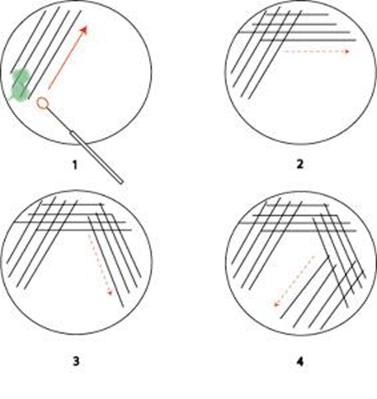Protocols for |E.coli|¶
Contents
Create chemically competent cells¶
| REFERENCE: | http://openwetware.org/wiki/Preparing_chemically_competent_cells |
|---|
Procedure¶
Culture |DH5a| on 2 |ml| of |LB| medium and incubate at 37 |C| overnight
Single Colony Isolation the |DH5a| on |LB| plate. Incubate the plate at 37 |C| overnight
Pick a colony and culture on 2 |ml| of |LB| medium overnight. The following morning, dilute the culture back into 25-50 |ml| of fresh |LB| medium in a 200 |ml| conical flask.
Grow the diluted culture to an |OD600| of 0.2-0.5
Split the culture into two 50 |ml| falcon tubes and incubate on ice for 10 min
All following steps should be carried out at 4 |C| and the cells should be kept on ice whenever possible
Centrifuge at 3,000 rpm, 4 |C| for 10 min
Completely remove supernate
Note
The cell pellets should be sufficiently solid that you can just pour off the supernate and pipette out any remaining medium
Resuspend in chilled |TSS| buffer. The volume of |TSS| to use is 10% of the culture volume that you spun down.
Note
You may need to vortex gently to fully resuspend the culture, keep an eye out for small cell aggregates even after the pellet is completely off the wall
Add 50 |ul| aliquots to your chilled 0.5 |ml| tubes and store at -80 |C|
Transforming chemically competent cells¶
| REFERENCE: | http://openwetware.org/wiki/Transforming_chemically_competent_cells |
|---|
Procedure¶
Add 1-4 |ul| of DNA, pipette gently to mix (usually approximately 1 |ng| of DNA is enough)
Incubate the cell for 30 min on ice and set 0.5 |ml| tube incubator at 42 |C| while waiting
Note
If you are in a rush, you can shorten this incubation time to 5-10 min
Incubate the cell for 30 sec at 42 |C| and immediately put on ice for 2 min
Note
This step is optional. Sometime this heatshock step improve transformation efficiency.
Incubate the cells at 37 |C| for 1 hour on shaker
Note
This step can be eliminated if antibiotic used is ampicillin. Most other antibiotic affect cell central-dogma pathway that’s why they cannot create any proteins on these antibiotic plates and pre-culturing is required to create proteins for against aitibiotic before plating on. However ampicillin only affect to cell wall pathway that’s mean the can create proteins even after plating on.
Spread 100-300 |ul| of cells onto a appropriate antibiotic plate. Grow overnight at 37 |C|
Save the rest of the transformants in liquid culture at 4 |C|. If nothing appears on your plate, you can spin this down, resuspend in enough medium to spread on one plate and plate it all. This way you will find even small number of transformants.
| [1] | |LB| medium is also suitable, original paper suggests |LB| + 20 |mM| glucose |
Colony PCR with KAPA Taq¶
| REFERENCE: | http://openwetware.org/wiki/Endy:Colony_PCR |
|---|---|
| REFERENCE: | http://www.kapabiosystems.com/products/name/kapa-taq-pcr-kits |
Procedure¶
Use a sterile toothpick or pipet tip to resuspend a plated colony in 50 |ul| of |ddH2O| on eppendorf tube. Repeat the steps as many as colonies you want
Store the colony resuspensions at 4 |C| so you can start cultures if necessary
Prepare Colony PCR reaction mix. The following indicate the number of colonies you picked
Each
Final
Required
KapaTaq 2x Ready Mix with Mg2+
5 |ul|
1
Fwd Primer (10 |uM|)
0.8 |ul|
0.4 |uM|
Rev Primer (10 |uM|)
0.8 |ul|
0.4 |uM|
2.4 |ul|
Dispense 9 |ul| of Colony PCR reaction mix to 8 thermo-strip tubes. Be sure to not touch the tubes with pipet tip except the bottom of the tube
Add 1 |ul| of colony resuspension to 8 thermo-strip tubes. Pipet to the tube wall is good idea when you have several primer condition for each samples
Vortex and centrifuge to be sure the solution has well mixed
Run PCR program with the condition below
